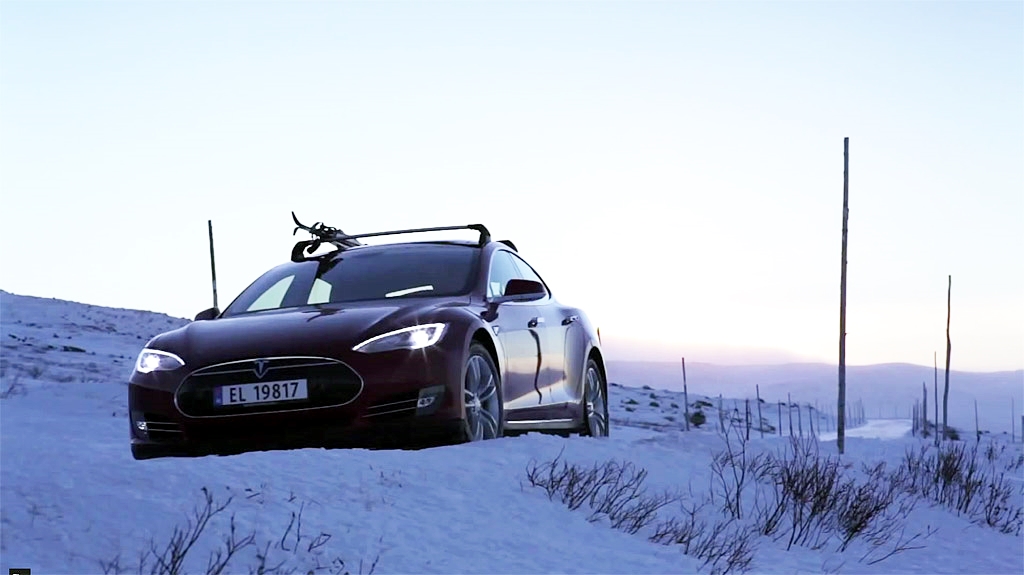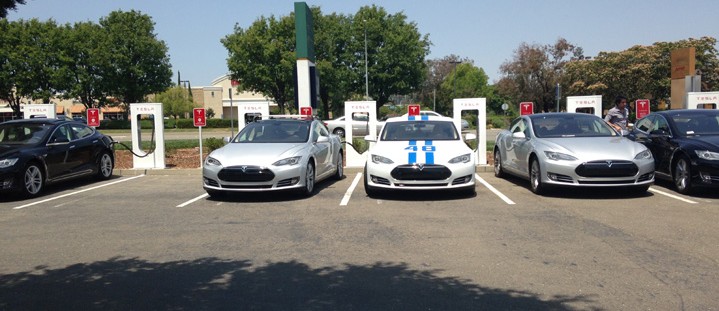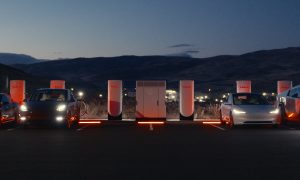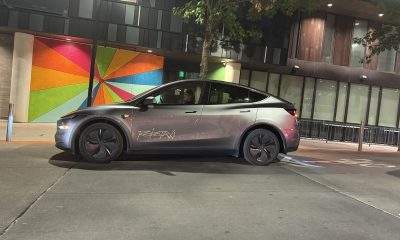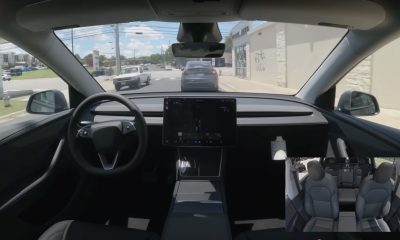News
Why Norway Loves the Tesla Model S
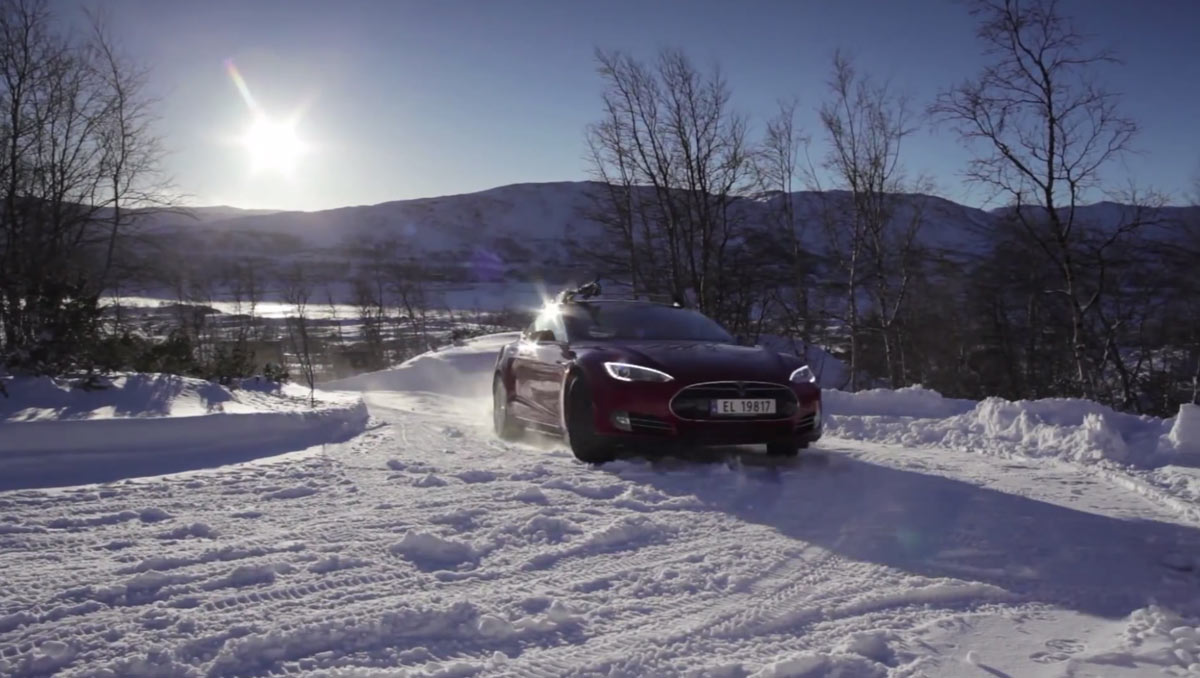
In January, Elon Musk made some controversial and critical remarks about hydrogen fuel cell cars when addressing a group of journalists during a Q&A session in Detroit. Musk’s comments were pertinent to my reading audience, so I published them as a blog post.
I then noticed something peculiar. The post had received hundreds of views from a single country: Norway. In fact, most of the views during a two-day period originated from this icy nation of only 5.1 million inhabitants.
Norway’s Best-Selling Car
During much of 2014, Tesla’s Model S was Norway’s best-selling vehicle. Not best selling electric car, but best-selling vehicle overall.
Sales of the Model S have gone gangbusters since its introduction in Norway. In the year and a half since its debut, in the country that’s famous for hosting the 1994 winter Olympics and being home to the popular Netflix show Lilyhammer starring Sopranos veteran Steven Van Zandt, the Model S has been setting records—and pleasing thousands of customers.
As reported by New York’s Daily News in April 2014, the Model S outsold Ford’s entire line of cars and sold double the number of Volkswagen Golfs, normally the number one seller in the snowy, narrow country that borders Sweden and Finland.
During the same period, the expensive Model S outsold the Nissan LEAF by a margin of three to one. Three to one. This goes counter to basic marketing dynamics, where more expensive products typically sell in lower quantities. Depending on battery configuration and options, the Model S is two to four times more expensive than the LEAF.
Satisfying Demand
It seem that the introduction of the Model S helped satisfy a pent up demand for performance-oriented electric cars in the Scandinavian country. As reported in the AID Newsletter (Automotive Industry Data) in September 2013, Elon Musk’s poster child for all things auto electric sold 184 units in its debut month of August 2013. It sold 322 units in September—besting the number two Volkswagen Golf, which sold only 256 cars. Not bad for right out of the gate (and in a nation of fewer than six million residents).
EV News Report, in a November 2014 article, reported that Norway’s goal to put 50,000 electric cars on the road by 2017 should be reached sometime in 2015. In the world of government initiatives, exceeding goals is almost unheard of.
In December 2014, CNNMoney published an article entitled Norwegians Love Tesla More Than Americans that spotlighted the fact that Tesla has sold more than 6,000 Model S sedans in the ironically oil-rich country. This is nearly 10% of the 61,000 all-electric sporty sedans sold globally since its introduction in 2012.
But why?
Part of the reason is simple economics. Norway’s government has offered steep incentives on battery electric vehicles to motivate its citizens to purchase zero emission cars. “Teslas and other electric vehicles are spared the steep sales taxes that can easily double the cost of a car,” reported CNNMoney last December.
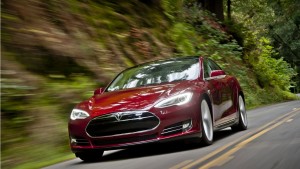 Norway’s automotive sales tax can “double the cost of a car.” Imagine that you heard that Tesla was having a 50% off sale on the Model S. Would you be interested?
Norway’s automotive sales tax can “double the cost of a car.” Imagine that you heard that Tesla was having a 50% off sale on the Model S. Would you be interested?
Norwegians are given additional incentives to jump on the electric car bandwagon, including the ability to travel in bus lanes, free parking, and no toll road charges (prices for which range from $0.65 to $20). For those who drive frequently and rack up the miles, especially for a five-days-a-week work commute, these are significant financial benefits and conveniences.
In Their Own Words
To learn more, I asked Norwegian owners themselves why they purchased a Model S. Most cited good value, inexpensive or free fuel (from home electricity or Tesla-supplied charging stations), exceptional driving range, and good handling in winter weather.
The Model S (in both 60 kWh and standard 85 kWh battery configuration) features a 48/52 front-to-rear weight distribution, making it a well-behaved rear-wheel-drive vehicle in rain or snow—critical in a northern climate like Norway. The top-shelf P85D, of course, features all-wheel-drive, making it even more adept in foul weather. “The total cost of ownership of my Tesla matches my previous car, a Toyota Prius. No fuel cost (not even electricity), no service, cheap insurance. Tesla is cheap compared to other cars in the same class,” said Marius Gromit Nedregård, an engineer living in Oslo (the nation’s capital and largest city).
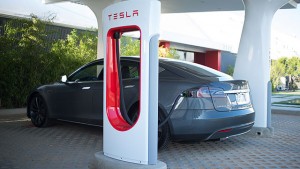 Ståle Andreassen, who works for his father’s gas station in Bodø (“Oh the irony,” he told me during our interview), in the northern region of the country, said he purchased, “Because the Model S is basically competing against a VW Passat (price wise) in Norway. In the U.S., it competes against an Audi RS7, [BMW] M6, etc. If the Model S cost just a little more than a VW Passat in the U.S., I think it would sell more, don’t you?”
Ståle Andreassen, who works for his father’s gas station in Bodø (“Oh the irony,” he told me during our interview), in the northern region of the country, said he purchased, “Because the Model S is basically competing against a VW Passat (price wise) in Norway. In the U.S., it competes against an Audi RS7, [BMW] M6, etc. If the Model S cost just a little more than a VW Passat in the U.S., I think it would sell more, don’t you?”
In terms of the power of word-of-mouth and how unofficial test drives from friends and family are propagating news of the value of the Model S in Norway, Andreassen said, “My father is about to replace his Audi A7 fully loaded with a P85D soon, so there will be two Teslas outside of our Esso station. First in the world?”
The Norwegian love of the Model S is tersely summarized by Are Koppang, an administrative director in Moelv, a city in southern Norway. “I drive a dream car, and cannot see how I will ever switch back to an ICE [internal combustion engine] vehicle.”
Embracing Renewable Energy
Culturally, Norway embraces renewable energy. According to EV News Report, 98% of the nation’s energy is derived from domestically generated, renewable sources. This is somewhat ironic, considering that the country, on a per-capita basis, is the world’s second largest producer of oil and natural gas, directly behind the Middle East (according to the CIA’s World Factbook). According to The Economist, “petroleum accounts for 30% of the government’s revenues.”
The desire to own a zero emission car was echoed by many responses I received from Norwegians. Sune Jakobsson, a system architect in Hommelvik, Sor-Trondelag, said he purchased a Model S, “To…buy an [electric car] with [a] more than 400 kilometer range, and the car is good for the environment.”
When asked why he purchased his Model S, Petter Karal, an owner from Oslo, said, “The opportunity to drive with a clean conscience.”
Goodbye Expensive Gas
Of course, one can’t discount the fact that gasoline is very, very expensive in Norway. In fact, as of February 2, gasoline in the country was selling at nearly four times the price in the United States, or more than $7.50 per US gallon. That’s no small incentive for Norwegians to dump gas-guzzling piston pumpers and adopt battery electric cars.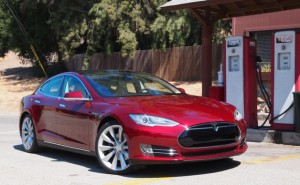
Arne Inge Dyrdahl, owner of a taxi company in Trondheim, cited saving money by not having to purchase gasoline as one of the primary benefits he gains from Model S ownership (he drives about 60,000 kilometers, or more than 37,000 miles, a year). “For me, tolls and fuel, if I only charge at home, saves me about 75,000 kroner [$10,000 USD] a year. More if I use Tesla’s free Superchargers.” Dyrdahl is anticipating delivery of his second Model S, a P85D, in March and has two Model Xs reserved.
Free Superchargers
Another reason for consumers in the country to consider a Model S is the healthy—and growing—network of Tesla Supercharger stations. Norway’s network of the fast-charge depots is currently populated by 21 such stations, available free of charge to all Model S customers (except those who purchase the entry-level 60 kWh model sans the “Supercharger Enabled” option, which is priced at $2,000 in the States).
All other Model S owners, if they live near one of these charging stations, get to enjoy free power for the life of their vehicle. In a country where petrol sells for more than $7 per gallon, this is no insignificant benefit. Tesla is planning to open five additional Supercharger stations in the country in 2015.
More Popular Than In California
Norwegians are adopting electric vehicles (EVs) in a way that matches the enthusiasm found in California. In fact, according to The Foreigner in a January 2015 article, sales of EVs in Norway have reached 15%, exceeding the saturation in the Golden State by nearly 50% (California recently reported 10% of new car sales being electric). “Some 40,000 electric vehicles were traveling on Norway’s roads as of December 2014,” reported the site.
When you add it up, it’s not surprising that Norwegians are embracing the Model S and purchasing the seductive sedan in record numbers. Even consumers who normally would find it difficult to justify the cost of a luxury car are doing the math and discovering that they can afford a Tesla.
Based on the savings from gasoline and no automotive tax, especially for those who pile on the miles, Norwegian consumers can enjoy a quiet, high-performance, luxury vehicle featuring state-of-the-art technology. Add in savings on maintenance (oil changes, transmission repairs, and exhaust work become a thing of the past), and no tolls or parking charges, and the mystery is solved: Norway loves the Model S because it saves them money and helps preserve their beautiful environment.
This is best summed up by Norwegian Model S owner Cato Standal, a manager with Emerson in Telemark, who said his purchase was a “Once in a lifetime opportunity to buy a vehicle with over 400 horsepower for the same price as a VW Passat,” adding, “Many of my friends who have tested the car [are] also thinking about buying [it].”
I’m surprised that I’m not seeing more Model S sedans show up in Lilyhammer. Apparently Tesla is more focused on engineering one of the world’s best battery electric cars than product placement. And Norwegians are applauding them all the way to the Supercharger station—after which they visit the bank to deposit what they saved on gas.
Elon Musk
Tesla investors will be shocked by Jim Cramer’s latest assessment
Jim Cramer is now speaking positively about Tesla, especially in terms of its Robotaxi performance and its perception as a company.

Tesla investors will be shocked by analyst Jim Cramer’s latest assessment of the company.
When it comes to Tesla analysts, many of them are consistent. The bulls usually stay the bulls, and the bears usually stay the bears. The notable analysts on each side are Dan Ives and Adam Jonas for the bulls, and Gordon Johnson for the bears.
Jim Cramer is one analyst who does not necessarily fit this mold. Cramer, who hosts CNBC’s Mad Money, has switched his opinion on Tesla stock (NASDAQ: TSLA) many times.
He has been bullish, like he was when he said the stock was a “sleeping giant” two years ago, and he has been bearish, like he was when he said there was “nothing magnificent” about the company just a few months ago.
Now, he is back to being a bull.
Cramer’s comments were related to two key points: how NVIDIA CEO Jensen Huang describes Tesla after working closely with the Company through their transactions, and how it is not a car company, as well as the recent launch of the Robotaxi fleet.
Jensen Huang’s Tesla Narrative
Cramer says that the narrative on quarterly and annual deliveries is overblown, and those who continue to worry about Tesla’s performance on that metric are misled.
“It’s not a car company,” he said.
He went on to say that people like Huang speak highly of Tesla, and that should be enough to deter any true skepticism:
“I believe what Musk says cause Musk is working with Jensen and Jensen’s telling me what’s happening on the other side is pretty amazing.”
Tesla self-driving development gets huge compliment from NVIDIA CEO
Robotaxi Launch
Many media outlets are being extremely negative regarding the early rollout of Tesla’s Robotaxi platform in Austin, Texas.
There have been a handful of small issues, but nothing significant. Cramer says that humans make mistakes in vehicles too, yet, when Tesla’s test phase of the Robotaxi does it, it’s front page news and needs to be magnified.
He said:
“Look, I mean, drivers make mistakes all the time. Why should we hold Tesla to a standard where there can be no mistakes?”
It’s refreshing to hear Cramer speak logically about the Robotaxi fleet, as Tesla has taken every measure to ensure there are no mishaps. There are safety monitors in the passenger seat, and the area of travel is limited, confined to a small number of people.
Tesla is still improving and hopes to remove teleoperators and safety monitors slowly, as CEO Elon Musk said more freedom could be granted within one or two months.
News
Tesla launches ultra-fast V4 Superchargers in China for the first time
Tesla has V4 Superchargers rolling out in China for the first time.

Tesla already has nearly 12,000 Supercharger piles across mainland China. However, the company just initiated the rollout of the ultra-fast V4 Superchargers in China for the first time, bringing its quick-charging piles to the country for the first time since their launch last year.
The first batch of V4 Superchargers is now officially up and running in China, the company announced in a post on Chinese social media outlet Weibo today.
The company said in the post:
“The first batch of Tesla V4 Superchargers are online. Covering more service areas, high-speed charging is more convenient, and six-layer powerful protection such as rain and waterproof makes charging very safe. Simultaneously open to non-Tesla vehicles, and other brands of vehicles can also be charged. There are more than 70,000 Tesla Superchargers worldwide. The charging network layout covers 100% of the provincial capitals and municipalities in mainland China. More V4 Superchargers will be put into use across the country. Optimize the charging experience and improve energy replenishment efficiency. Tesla will accompany you to the mountains, rivers, lakes, and seas with pure electricity!”
The first V4 Superchargers Tesla installed in China are available in four cities across the country: Shanghai, Zhejiang, Gansu, and Chongqing.

Credit: Tesla China
Tesla has over 70,000 Superchargers worldwide. It is the most expansive and robust EV charging network in the world. It’s the main reason why so many companies have chosen to adopt Tesla’s charging connector in North America and Europe.
In China, some EVs can use Tesla Superchargers as well.
The V4 Supercharger is capable of charging vehicles at speeds of up to 325kW for vehicles in North America. This equates to over 1,000 miles per hour of charging.
Elon Musk
Elon Musk hints at when Tesla could reduce Safety Monitors from Robotaxi
Tesla could be reducing Safety Monitors from Robotaxi within ‘a month or two,’ CEO Elon Musk says.

Elon Musk hinted at when Tesla could begin reducing Safety Monitors from its Robotaxis. Safety Monitors are Tesla employees who sit in the front passenger seat during the driverless rides, and are there to ensure safety for occupants during the earliest rides.
Tesla launched its Robotaxi fleet in Austin last Sunday, and after eight days, videos and reviews from those who have ridden in the driverless vehicles have shown that the suite is safe, accurate, and well coordinated. However, there have been a few hiccups, but nothing that has put anyone’s safety in danger.
A vast majority — close to all of the rides — at least according to those who have ridden in the Robotaxi, have been performed without any real need for human intervention. We reported on what was the first intervention last week, as a Safety Monitor had to step in and stop the vehicle in a strange interaction with a UPS truck.
Watch the first true Tesla Robotaxi intervention by safety monitor
The Tesla and UPS delivery truck were going for the same street parking space, and the Tesla began to turn into it. The UPS driver parallel parked into the spot, which was much smaller than his truck. It seemed to be more of an instance of human error instead of the Robotaxi making the wrong move. This is something that the driverless cars will have to deal with because humans are aggressive and sometimes make moves they should not.
The Safety Monitors have not been too active in the vehicles. After all, we’ve only seen that single instance of an intervention. There was also an issue with the sun, when the Tesla braked abnormally due to the glare, but this was an instance where the car handled the scenario and proceeded normally.
With the Robotaxi fleet operating impressively, some are wondering when Tesla will begin scaling back both the Safety Monitors and Teleoperators that it is using to ensure safety with these early rides.
CEO Elon Musk answered the inquiry by stating, “As soon as we feel it is safe to do so. Probably within a month or two.”
As soon as we feel it is safe to do so.
Probably within a month or two. We continue to improve the Tesla AI with each mile driven.
— Elon Musk (@elonmusk) June 30, 2025
Musk’s response seems to confirm that there will be fewer Teleoperators and Safety Monitors in the coming months, but there will still be some within the fleet to ensure safety. Eventually, that number will get to zero.
Reaching a point where Tesla’s Robotaxi is driverless will be another significant milestone for the company and its path to fully autonomous ride-sharing.
Eventually, Tesla will roll out these capabilities to consumer-owned vehicles, offering them a path to generate revenue as their car operates autonomously and completes rides.
For now, Tesla is focusing on perfecting the area of Austin where it is currently offering driverless rides for just $4.20 to a small group of people.
-

 News5 days ago
News5 days agoTesla Robotaxi’s biggest challenge seems to be this one thing
-

 News2 weeks ago
News2 weeks agoTesla confirms massive hardware change for autonomy improvement
-

 Elon Musk2 weeks ago
Elon Musk2 weeks agoElon Musk slams Bloomberg’s shocking xAI cash burn claims
-

 News2 weeks ago
News2 weeks agoTesla features used to flunk 16-year-old’s driver license test
-

 News2 weeks ago
News2 weeks agoTesla China roars back with highest vehicle registrations this Q2 so far
-

 News2 weeks ago
News2 weeks agoTexas lawmakers urge Tesla to delay Austin robotaxi launch to September
-

 News2 weeks ago
News2 weeks agoTesla dominates Cars.com’s Made in America Index with clean sweep
-

 News2 weeks ago
News2 weeks agoTesla’s Grok integration will be more realistic with this cool feature

